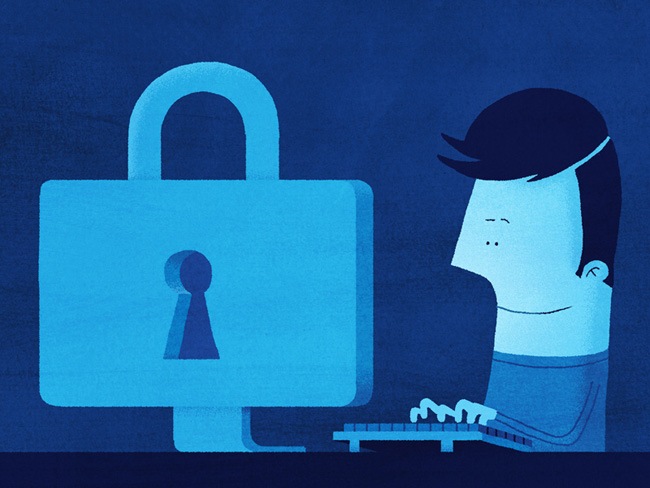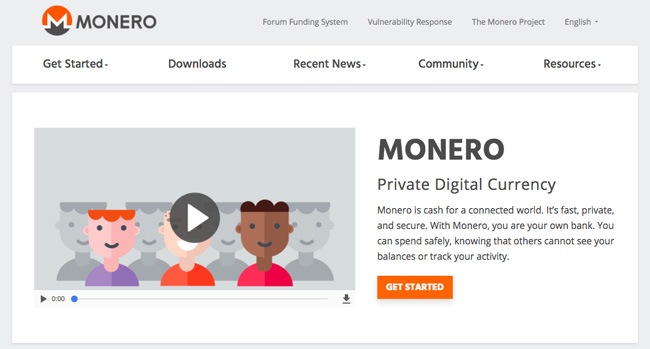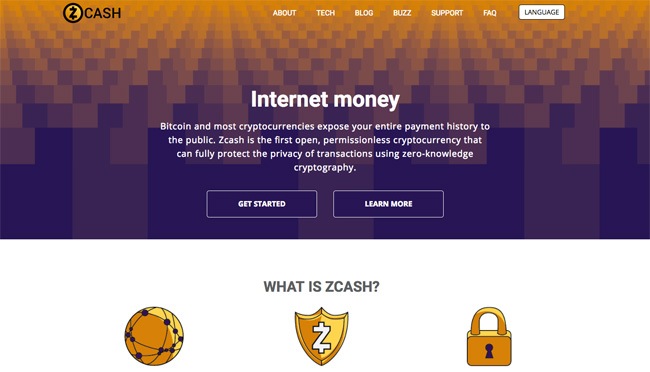The pressing talks of regulations and investigations by governments all over the world have caused users of cryptocurrencies to be concerned about the issues of protecting their privacy through these digital assets.
It is a widely known fact that while famous public blockchains such as Bitcoin and Ethereum do not share their users’ personal information on the network, other details like transaction statistics are shared. These transaction statistics include the amount shared and the network addresses involved in the transaction. This information is published publicly to maintain a transparent ledger.
This leaves users vulnerable to being tracked, if someone knows their network address along with other pertinent details, then those transactions can easily be traced back to them.
The aforementioned issues have since caused such individuals to show an interest towards “privacy coins”, cryptocurrencies that are based on the idea of protecting their users’ privacy to the hilt.
This increasing interest also means that more users are now trying to assess which privacy coin is the best for their needs.
While there are several coins that serve this purpose, two names, Monero and Zcash, remain prevalent in such discussions, and those are the privacy-centric cryptocurrencies that we are going to cover in this analysis today.
So without further ado, let’s see which one of these privacy coins could come out as the winner with their current offerings and what they could bring to the table in the future. But before that, let’s have a little history lesson on both of them!
What is Monero?
Monero first saw the light of day in the first half of 2014, courtesy of a Bitcointalk forum user by the handle of “thankful_for_today”. The real identity of the user remains unknown as of yet.
The network was forked from Bytecoin, but unlike several such forks which try to bank on the name of the original network, it rebranded and was called “Bitmonero”. Bitmonero only lasted as its nome de plume for a very short period of time. It was later termed “Monero” and this is the name that it goes by today. The cryptocurrency also has a ticker of XMR.
Citing code performance issues in Bytecoin as the reason for its fork from the network, the team from Monero claimed that it fixed those issues after the finalization of the fork.
Since it was forked from Bytecoin, the Monero platform was by default built upon an existing, privacy- centric blockchain protocol called Cryptonote. The network has since refined it with several of its own updates.
Talking about specific functions of Monero, it offers interesting functions to its users, which it has strived to add over time.
Ring Signatures
To protect the privacy of senders, Monero uses a function called “Ring Signatures”. This means that each transaction is signed by several signees. For this to happen, the Monero network uses the sender’s account key along with a few public keys from the blockchain.
After this process of obfuscating the key information has been completed, the sender generates a one-time, transaction specific key, which is then sent to the recipient, who remains to be the only party who can see that one-time key and utilize the amount sent.
By using these multiple signature mechanisms where all keys are valid, Monero ensures that no one who is looking into the transactions would ever be able to tell which key belonged to the actual sender’s account.
Stealth Addresses
This protects the privacy of recipients, where senders invoke “random one-time addresses” for each transaction performed.
These stealth addresses remain untraceable and unique. While payments could be sent to these unique addresses over the network, recipients still need to only publish one address for themselves.
This process ensures that transactions are never linked to recipients.
Ring Confidential Transactions (RingCT)
To hide the information of the amount sent, Monero implemented the RingCT mechanism in 2017.
This takes the Ring Signatures mechanism a step further to implement it for the amount sent. The new mechanism not only hides the amount but also makes the amount unlinkable to a transaction.
Ring CT makes adds more value to the process of obfuscation. Ring CT makes certain that the transaction amount is also not shown, hiding all details of the transaction. Ring CT helps to complete the process of making Monero transactions completely anonymous.
This inherent design makes Monero one of the standard privacy coins in the cryptocurrency industry.
All of the aforementioned design methodologies collectively make Monero transactions the most complex to decipher. Anyone who is trying to trace these sort of transactions will have a hard time trying to find out the details of the sender, the recipient and the transaction amount.
All transactions performed on the Monero blockchain are private by default and semi-transparent by choice of the transacting party.
Despite all of this, Monero has been experiencing tough times in terms of value, where its once consistent value has registered drops since the prior month.
Statistics Taken from CoinMarketCap
Now What is Zcash?
Zcash is an encrypted, public blockchain that came into existence in 2016, and introduced its own eponymous cryptocurrency, ZEC.
The privacy coin was built on the Zerocoin protocol, where the original protocol and its functionalities were enhanced by the Zcash team. The project which is led by the founder and CEO, Zooko Wilcox.
Zcash claims to be the HTTPS layer for blockchains. By leveraging its unique privacy solutions, it offers its users two addresses to use on its network, providing them with the option to use the privacy-protected address to enforce privacy over the network, and the choice to use a transparent address which displays transaction information publicly.
Zcash utilizes a new technology by the name of zk-SNARKS, which stands for “Zero-Knowledge Succinct Non-Interactive Argument of Knowledge”.
In simpler terms, zk-SNARKS is a “zero knowledge proof-of-knowledge”. With this technology, Zcash provides its users with the certainty of verifying their transactions simply while also keeping details private.
For instance, when a transaction needs to be verified, the proof-of-knowledge mechanism works to tell the verifier that the information pertaining to the transaction is true, without actually revealing direct information.
This ensures that the information for transactions that have been chosen to be private remains secure.
And by implementing these measures, whenever users go with the option to make their transactions private, Zcash makes sure that the data regarding a transaction’s sender, recipient and amount remains encrypted and undisclosed.
Since zk-SNARKS and the underlying zero-knowledge proofs are new technologies, the Zcash team maintains the utmost security about the parameters generated to supplement them and keeps destroying the generation methods used to make sure that no one can get their hands on them.
However, the Zcash network currently only holds very few shielded transactions since it does not provide that option to all users. But that is supposed to be changed with the updates that Zcash has planned for the future, such as its upcoming “Sapling” implementation which is supposed to go live sometime in the second half of 2018.
Zcash has not had a very good fortune in terms of maintaining its value, but that can be expected from a relatively new coin since it only started trading a little over a year ago. This may also be due to the general present market conditions.

Statistics Taken from CoinMarketCap
Which One Is a Better Privacy Coin? Monero or Zcash?
Before we can provide a comprehensive answer to this question let us go through some of the key factors of comparison. This thorough criterion should help our readers to have a guideline in terms of assessing coins in the future as well.
Let’s start with the features of each coin.
Monero’s functionalities and its features have all been tested for real-world usage. Even the latest of its features have been utilized by a large number of users.
It can be concluded that the features that Monero offers do check out.
Zcash also provides what it’s promised so far, but its functionalities and features have not been as widely used in the real world or by a large number of users. For now, its claims for zk-SNARKS to be a cryptographic revolution have only been tested by its limited user base.
In regards to transaction speeds, Monero provides fast transactions even after having a significant amount of users on its blockchain. Zcash achieves the same for now, but it has a limited number of user base at the current moment. If Zcash has any underlying scalability problems like Bitcoin, they will only show when the number of users has grown to a certain point.
Furthermore, while Monero offers complete and utter transparency, Zcash falters in that aspect for now.
In Monero, the transactions are private by default and semi-transparent by choice; however, this works in reverse for Zcash, where transactions are semi-transparent to display information publicly by default and are private only by choice of the users.
This is going to remain unchanged, at least until Zcash has its Sapling update. For now, the number of users who are able to leverage the private or shielded transaction feature remains limited.
This also poses a privacy concern for those who want privacy options from the get-go.
For instance, when someone purchases XMR from an exchange and already has a Monero wallet and address configured, they can provide the wallet address to the exchange and have their XMR sent to their untraceable address.
But when they purchase ZEC, they (almost always) have to provide the public address of their Zcash wallet out of the two addresses provided to them by the network. While Zcash’s supporters say that this is done to ensure that Zcash’s initial movement remains traceable, proponents of the utmost privacy do not buy that reason.
On the other hand, this arguably extreme emphasis on privacy has earned Monero some controversy points as well.

Much like Bitcoin which was once considered “untraceable” and used in illicit means for illegal goods trafficking and money laundering, Monero is sometimes used for the same activities as well.
It is understood that it is not the fault of Monero’s technology or its team but of the people who use it in criminal activities, but that does not stop the stigma that Monero faces due to its unwanted association with such activities.
Speaking of negative associations, Monero has also been involved with the “cryptojacking” scandals which came to light in 2017.
In these incidents, hackers take over the computers and servers of unsusceptible institutions and individuals and discreetly start mining Monero, which is one of the easiest cryptocurrencies to mine since it does not require special application-specific integrated circuit (ASIC) chips or heavy machines for its mining operations.
In fact, it was very recently reported that hackers have made off with more than $75,000 in XMR during one of these incidents. And to repeat… just one of these incidents. The collective amount of all instances would be far higher.
It is possible to mine Monero this way because it uses a proof-of-work (PoW) algorithm that is based on Cryptonote; which as mentioned above, does not require heavy machinery to execute its mining operation.
Zcash also uses a PoW mechanism that is ASIC-resistant, and its Equihash PoW does not require ASIC chips for its mining operations. However, Zcash has managed to steer clear of the cryptojacking phenomenon so far.
One more thing which should be taken into account is the total supply for both of these cryptocurrencies.
While Zcash has a total supply of 21 million, Monero has an initial cap of 18.4 million, with an added and infinite generation rate of 0.3 XMR per minute once the network’s calculated reward drops below 0.3.
Where Zcash has gone the traditional route with this, Monero has taken an out of the box approach to keep increasing coin supply even if it is at a slower rate.
So Who Gets to Be the Winner in This Comparison Between Monero and Zcash?

From where things stand now, as a privacy coin, it has to be Monero due to its tested and proven methods of maintaining users’ privacy. There is no doubt that Zcash offers wonderful features, but the fact remains that they have not been as thoroughly used as Monero, and therefore it is unclear to say whether there are any flaws in the new technologies which Zcash proposes.
On the other hand, with the current controversies that Monero is facing in terms of cryptojacking and its usage in criminal activities, this could have a potential effect on future value. Whereas Zcash’s current leniency on privacy could make it a sweetheart for centralized institutions as a friendly alternative to a privacy coin, and that could have positive effects on the value of ZEC.
In the end, it all comes down to what use case you would like to apply to them. If you want to go for privacy and do not mind risks with value, then go for Monero. On the other hand, if you are looking to invest in a privacy coin that is still finding its roots and has the potential to grow further, then go for Zcash.
That being said, cryptocurrency investments should be made with caution. While this post was written to provide an overview, it should not be taken as definitive investment advice.
Feature image credits:


